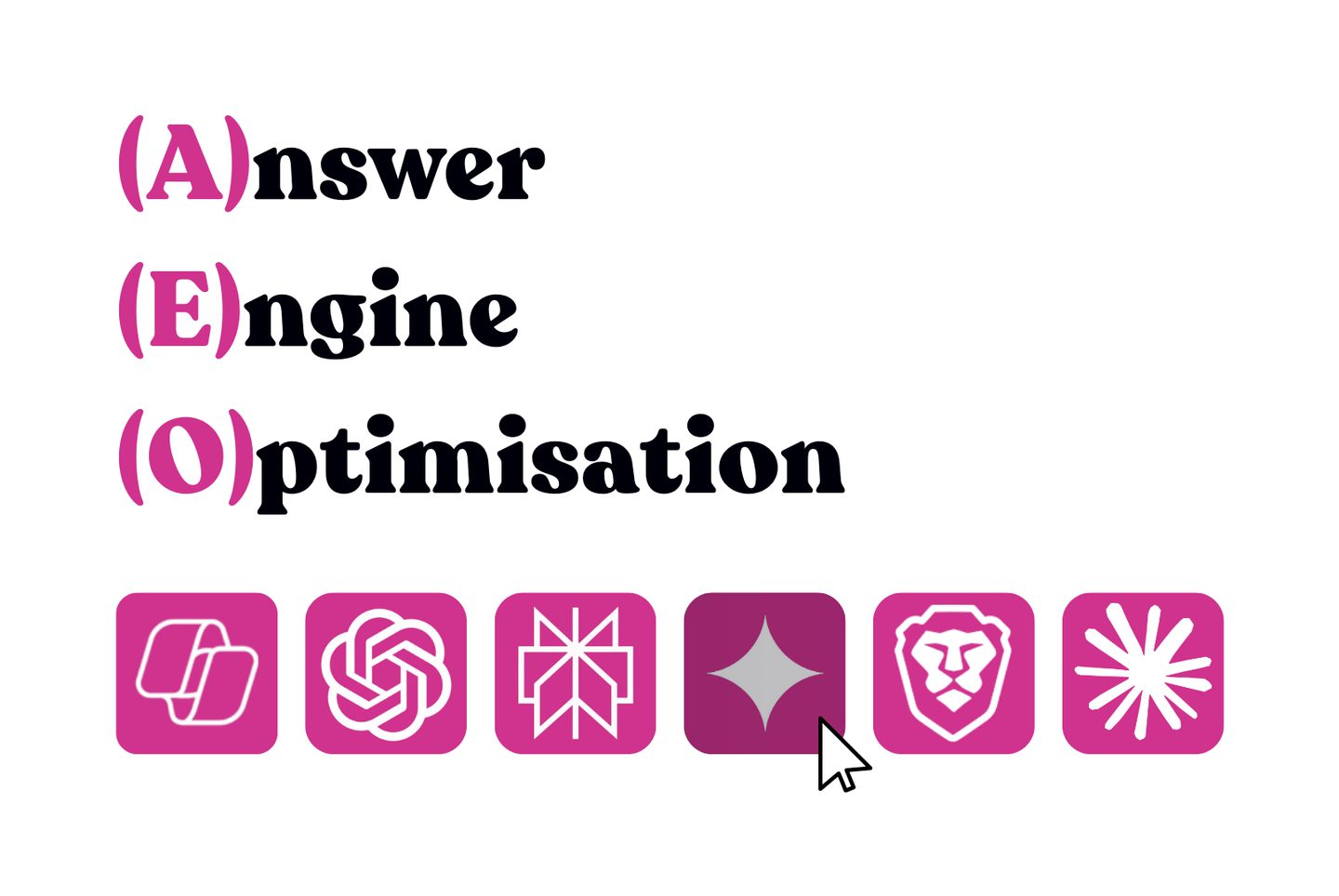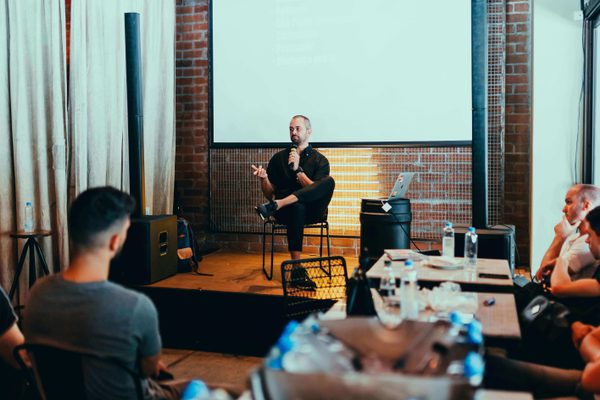Getting your content into the AI summary - what is AEO?
Written by Jamie Joseph
Answer Engine Optimisation (AEO) is the latest digital marketing technique you need to use. With the constant increases in generative engine (GE) usage, having content that is tailored to these applications is crucial in maintaining brand visibility and presence.
AEO (sometimes referred to as Generative Engine Optimisation or GEO) refers to organic and technical content strategies that, similarly to Search Engine Optimisation (SEO), optimise content for answering users’ queries. The key difference is that GEs index content that responds to queries in a conversational style and they index content in ‘chunks’ rather than full web pages.
This article has been assigned the following categories: Marketing, Tips,

What is a generative engine?
A generative engine is an AI system (usually a Large Language Model aka an LLM) that uses machine learning to understand a user’s intention (search query), retrieves relevant information from multiple sources and synthesises a natural-language response.
You may hear generative engines referred to as AI search engines, intelligent search, smart search or answer engines. They all refer to AI models that are tailored to answering user queries with natural-language responses. Some generative engines you might be familiar with are ChatGPT Search, Perplexity AI, Google Gemini, Microsoft Copilot, Brave Search or Claude AI.
How it works
Generative engines follow a few clear steps to synthesise answers to a user’s queries. Here they are in order:
- The AI receives a query from a user
- The query is expanded internally; it is broken down into intent and subtopics
- The engine retrieves relevant information from its index, this means their knowledge base, the live web (if it has access), YouTube transcripts and documents like whitepapers and PDFs
- The information is filtered by the engine based on relevance and trust, then it is either added to the summary or deleted
- The engine creates a summary that best suits the user’s query and intention, citations are included in the summary where applicable to add credibility
On the topic of citations, your content will not always be cited even if it is used, however, the engine still ranks the source based on the user’s sentiment and subsequent queries (or lack thereof). Your focus with AEO should not solely be citations, but also creating authority in your niche.
Organic vs technical AEO
Organic AEO
Organic AEO is everything you can do as a content creator, this means the way your content is formatted, the style of writing, the planning around key terms, backlinks and platform presence.
Our best tips are to:
- Format content in ‘clusters’ – every section of your article should answer a specific query
- Try to write in a conversational style, this way your content will align with the longer tail search terms AI uses internally
- On top of your regular keyword (keyphrase) investigate long tail search terms that are related, you can find these on tools like Google Trends
- Create “how to” guides and FAQs that demonstrate knowledge in your industry
- Create evergreen content on Reddit and YouTube to create a larger range of resources that engines can draw your content from
Similarly to best practice for SEO, you should make sure your content uses relevant links to enhance credibility and increase traffic. You should also make sure your content is high quality, focus on sharing clear and helpful content.
Long tail search terms are longer keyphrases that try to meet a user’s search query e.g. instead of using ‘GEO’ as the keyphrase, opting for ‘what is GEO?’ or ‘how can I use GEO on my website?’.
Technical AEO
Technical AEO is what you’ll need your website developers to implement for you, on top of the tips we share here using a tool like SE Ranking or SEMRush is a great place to start.
Our best tips are to:
- Allocate the correct Schema data to content blocks, containers and page types
- Make sure your site is built using predominantly light weight HTML
- Make sure your public content is crawlable (you can create an LLM.txt file to guide specific generative engines)
Similarly to best practice for SEO, you will want to optimise your webpages for mobile first and ensure that your content is structured correctly using semantic HTML, with headers, lists and appropriate formatting techniques.
What you need to do
On top of implementing the organic and technical best practices we’ve shared, now is the best time to review your entire website based on its SEO and AEO performance. If you’ve been putting off the creation of your FAQs, write them based on your customers’ common search queries to rank where your competitors are not.
Use social media
If you’re not already creating content on a professional Instagram page you need to be. We recently shared an article on how Instagram content is being indexed by Google. This means that you have another channel to utilise to enter GE’s results, positioning yourself a step ahead of competitors already implementing AEO.
The benefits of Answer Engine Optimisation
According to a Deloitte survey as of May 2024, over 18 million (or 36% of) people in the UK have used generative AI. EY’s April 2025 AI Sentiment Index found that 70% of UK respondents had used AI in their daily lives in the past 6 months. This is a clear indicator that GEs will be taking market share from traditional search engines in the same way that social media has been.
On average 12.3% of shoppers who engage with AI make a purchase, this is almost 4x more than the rate of those who don’t. If you integrate any generative engines on your website, or you rank highly in AI searches you will see more conversions as a result. You will see tangible results by utilising AI as consumer habits become more reliant on them.
Websites across Google have reported lower click through rates, however, impressions have been increasing. This is due AI summaries giving people succinct answers to their queries; however, this has not decreased traffic to sales and service-related pages – only information based (like blogs). This should improve the quality of visitors and reduce your bounce rate over time.
How to track your progress
Tools like SE Ranking’s AI Search Toolkit are a great lower cost option, however, if you’re looking for a free tool you can get limited insights with services like HubSpot’s AEO Grader. If you need more insight you can build up your own report with information from Google Search Console, Google Analytics and by prompting engines like ChatGPT to see what results are shown.
If you’re interested in creating Answer Engine Optimised content, as well as SEO content, Scaramanga is the right place to look. We’re experts in content creation for web and social media. If you want to increase brand visibility, get in touch.


